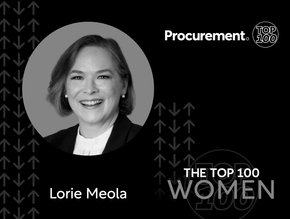HICX: A fresh perspective on supplier relationships

As 2022 gets off to a start, business leaders are making it a priority to build resilience into their supply chains. In doing so, their relationships with suppliers are coming into view, and what’s being exposed are some significant fault lines.
But within the volatile landscape we continue to face, having supplier relationships that are strong and healthy is no longer a nice-to-have, it’s a business imperative. So, what can enterprise leaders do to put things right?
Getting a lay of the land
It’s no secret that large organisations are painfully dependent on their supplier networks. Like employees, happy and motivated suppliers are an asset. But despite this, many organisations have outdated processes, making it difficult for suppliers to do their best work. With supply chain resilience rising up the agenda, this relationship imbalance can no longer wait to be addressed.
As things stand, a common approach to dealing with suppliers is the Supplier Relationship Management (SRM) model. If implemented well, SRM can be very beneficial. With performance at the core of the approach, SRM is immensely handy for certain supplier categories that use quantitative data to measure outcomes. It also offers collaboration and innovation opportunities for buying organisations while providing suppliers with a view on how they are doing.
However, despite the value it promises, in practice, SRM is often poorly executed. Its performance-based nature causes SRM to favour goal tracking over relationship building. It’s not uncommon for organisations to drive ‘healthy’ competition or withhold payments, to get the most out of suppliers. Although SRM helps to extract ideas from suppliers, the methodology can be bureaucratic and arduous, which seriously limits supplier-led innovation. Also, the system doesn’t support two-way feedback, making a genuine assessment of the health of relationships difficult to attain.
Appealing to the masses
To make matters worse, when SRM is indeed implemented well, it only ever applies to a small handful of suppliers. It’s usual for about 10% of suppliers - those who are strategically relevant - to get special treatment. For the overwhelming majority, there’s a host of bugbears with which to contend. Continuous pain points, such as late payments, unrealistic demands, endless survey requests and unclear processes, hinder supplier performance. This can seriously impact the organisation’s competitive position, especially during a crisis when the stakes are high.
From quick response times and on-time delivery, to correct quantities and first access to innovation, enterprises need to receive the best from their suppliers. Being a customer-of-choice matters. Good suppliers will always have a choice, and leading organisations are the ones ensuring that they’re being chosen. And in times of constrain, this becomes all the more prevalent.
Gone are the days when organisations can rely on only a handful of suppliers. If Covid-19 has taught us anything, it’s that manufacturers must be able to call on any given supplier, at all times. For instance, when the crisis first presented, indirect suppliers of cleaning materials, protective personal equipment and remote working technology, were suddenly as vital to operations as their biggest ingredient suppliers. Given the choice of which customers to offer their best to, it’s natural for suppliers to prioritise their top relationships. All suppliers matter, regardless of how tactical they are. So why aren’t we treating 100% of suppliers as strategic partners?
Weeding out friction
This way of thinking forms part of a wider movement: Supplier Experience Management. The principle calls for organisations to really consider what it’s like for suppliers to interact with them. Despite 78% of CPOs believing they’re excellent to work with, over a third confess they should offer suppliers better services and support, and over two-thirds know they need to resolve supplier queries faster, according to a HICX survey.
Supplier friction is a barrier to mutual success. Any supplier that is reluctant to volunteer information or unable to pivot in response to an unexpected request – because of a poor experience – weakens the buying organisation. The good news is that enterprises can build a healthy supplier experience, by establishing a single version of truth in supplier data. Only by accessing fact-based information, can enterprises see where the friction lies, and then remove it.
As with any relationship, once issues have been identified and addressed, it’s necessary to actively preserve the health of the relationship. This happens by making a habit out of stepping into the supplier’s shoes. Do any new or recurring issues need tackling? Is the “give and take” balance conducive to mutual success? Are we still recognising the value our supply base represents?
Committing to mutual success
To maintain good relationships with suppliers, having the right cultural mindset and technology framework is imperative. A deep commitment by the enterprise to view 100% of the supply base as partners with shared goals and wins, is what it takes. As is having a digital strategy that supports a single source of truth in supplier data, to help unlock a good supplier experience.
To keep the relationship healthy, suppliers must receive a one-to-one journey that’s relevant and streamlined. Rather than applying a blanket approach to all suppliers, different groups need to be treated independently. For example, a small florist providing flowers for the reception, shouldn’t be expected to fill in the same compliance forms or have the same insurance level as a large direct supplier of key components.
Finally, to sustain a strong supplier experience, it needs to be owned. In successful organisations, marketing departments work to provide a positive consumer experience to drive sales. HR teams invest in employee experience programmes to help retain and motivate staff. Equally, any business that values being a customer-of-choice, should prioritise supplier experience. There’s no better champion for this cause than procurement specialists, thanks to their visibility into the supply chain and deep understanding of the supplier landscape.
As uncertainty in the business landscape continues, the Supplier Experience Management movement presents enterprises with a significant opportunity. By embracing this next evolution of supplier management, organisations can shape strong and healthy relationships with all their suppliers. This is the way to build true supply chain resilience.
- How IBM & AWS are Making Procurement Better Across the WorldTechnology & AI
- How SAP’s AI is Offering Cutting Edge Spend ManagementProcurement Strategy
- ePLDT’s CPO is born to the role of procurementProcurement Strategy
- IRIS & Amazon Business ease Procurement Process for SchoolsSupply Chain Management






